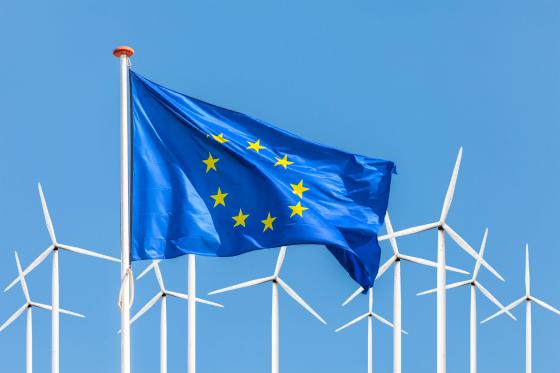Flexibility
Flexibility
What is power system flexibility and why does it matter?

Flexibility is the ability of an electricity system to adjust to the variability of generation and consumption patterns and to grid availability. The type of flexibility depends on the timeframe (e.g. real-time, daily, long-term). Flexibility enables:
- Demand response, storage or flexible generation (e.g. a biogas power plant) to balance supply and demand.
- Shifting renewable energy from periods of excess (e.g. sunny weekends) to times of high demand.
- Making optimal use of the grid for cross-zonal trade and reducing grid congestion, which limists renewables curtailment (wasting renewable energy when the grid cannot absorb it).
Unlocking flexibility will enable the clean energy transition (away from fossil fuels) in a cost-effective manner. It is crucial to help Member States deliver on the EU’s binding 2030 renewable targets (42.5%) and climate neutrality by 2050.
Flexibility
What’s the link between regulation and flexibility?

Flexibility covers a wide range of system, infrastructure and market design topics from technical aspects (such as system operation, grid connection requirements and inertia) to market related aspects (operation of balancing markets, congestion management, minimal capacities for cross-zonal trade, etc.), investments in the power system (e.g. generation with fast ramp rates, grid infrastructure upgrades) and regulatory frameworks.
How does ACER contribute to unlocking flexibility?
The EU's (2024) Electricity Market Design reforms charged ACER with tasks related to flexibility including:
- adopting a methodology for national flexibility needs assessments;
- identifying the gaps between the needs and the reality; and
- monitoring and identifying barriers to flexibility and recommending how to lift them.
ACER is also responsible for drafting the recommendation on the EU-wide Network Code on Demand Response, which set the rules for demand response, storage and distributed generation.
Flexibility
What is the flexibility needs assessment methodology?

The flexibility needs assessment methodology, guides electricity network operators and Member States in identifying how much clean and flexible energy their country needs.
The methodology builds on national and European resource adequacy assessments. It distinguishes between two main types of flexibility needs: network flexibility needs and system flexibility needs.
Network flexibility reflects the flexibility needed to adjust for grid availability, whereas system flexibility refers to the ability of the electricity system to adjust both power generation and consumption in response to signals from the market.
To support harmonisation across the nearly 3,000 distribution system operators (DSOs) in the EU, DSOs should take into account the regulators’ guidance on distribution network planning.
This harmonised and unified approach serves both national and EU-wide estimations of flexibility needs. To unlock flexibility, Member States can remove barriers, set up dedicated flexibility schemes or adjust existing capacity markets to incentivise non-fossil flexibility.
How will the national flexibility needs methodology be used?
Based on the flexibility needs assessment methodology, each EU Member State shall:
- Conduct a national flexibility needs assessment (FNA) using the new methodology.
- Submit the FNA to ACER and the European Commission (by July 2026).
- Use the findings to define indicative national targets for non-fossil flexibility (by January 2027).
- Promote the entry of new non-fossil flexibility.
ACER will then publish an EU-wide report to estimate the flexibility needs, including a set of recommendations on issues of cross-border relevance at EU level (by July 2027). In doing so, ACER will also identify any gaps between the assessed needs and the actual availability of flexibility resources.
Flexibility
Why monitor the barriers to unlocking flexibility?
ACER monitors the market to identify barriers to unlocking flexibility. Based on the findings, ACER drafts recommendations to lift such barriers and tap into the full potential of flexibility (see the ACER 2025 report on no-regret actions to stimulate flexibility).
Documents
-
ACER flexibility needs assessment methodology (2025)

